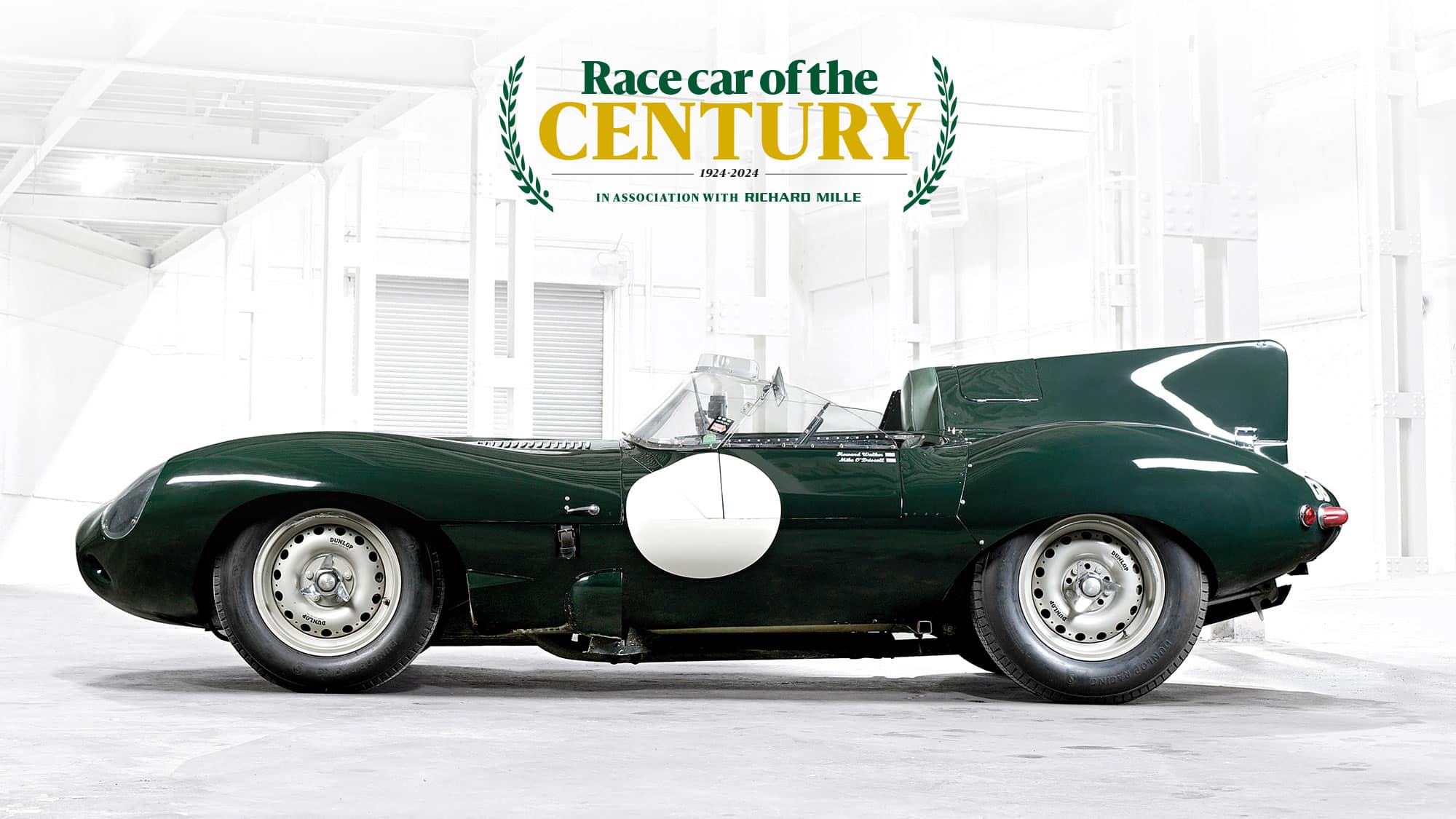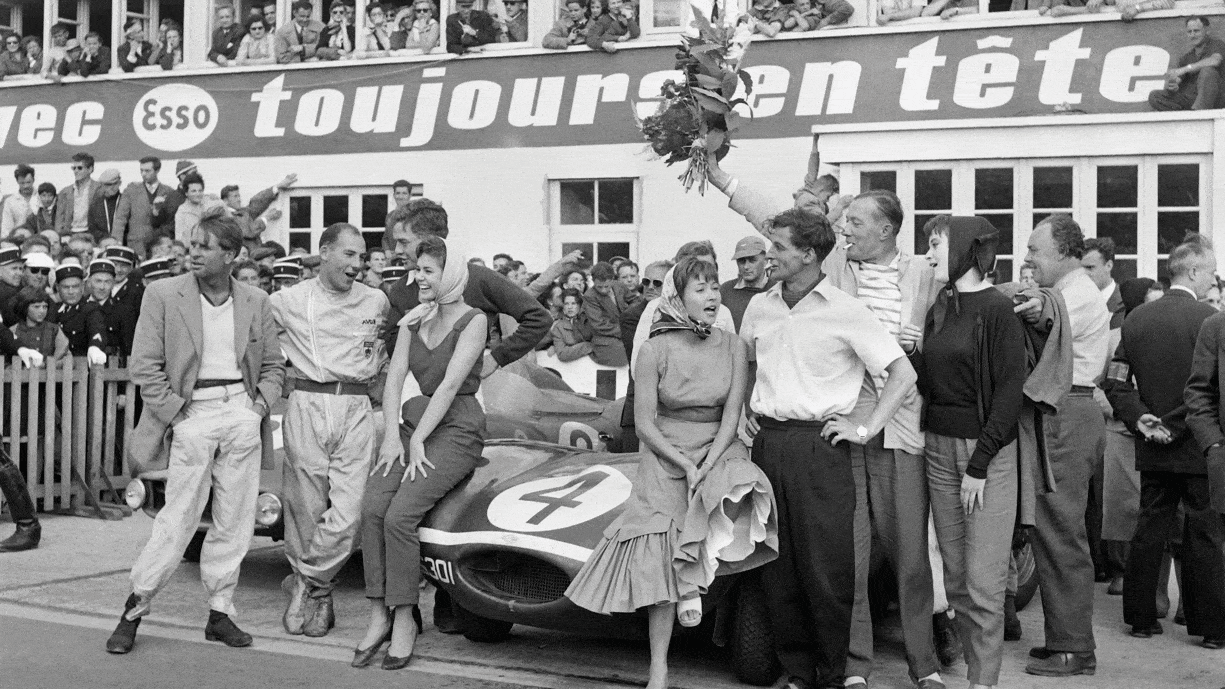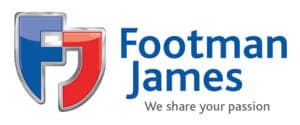Jaguar D-type: Groundbreaking Le Mans winner
The slippery D-type topped a terrific 1950s for Jaguar and, says Damien Smith, it won where it mattered: the Le Mans 24 Hours

The D-type owes its aerodynamic excellence to designer Malcolm Sayer, who’d previously worked at aircraft manufacturer Bristol during the war
Jaguar Heritage
Voting has now closed in our Race Car of the Century poll and the winner will be announced later this summer. Sign up to our Archive newsletter and you’ll be among the first to be notified.
4 1950s Jaguar D-type
Just look at that profile. The perfect curves over the wheel arches; that low cockpit with the high sill and short-cut door; the jaunty rake of the fin that adds a signature flourish. It’s the Spitfire of the race tracks, as British as bully beef. Patriotism really shouldn’t come into it, but forgive us… just this once. Over a congestion of Ferraris, Maserati’s glorious 250F, Farina and Fangio’s Alfetta and Moss and Brabham’s back-to-front little Coopers, the Jaguar D-type gets our vote as racing car of the 1950s. Is that a strain of Elgar ringing in our ears?
It wasn’t all pomp and circumstance, of course. The D matters because it was both groundbreaking and successful, its trio of consecutive Le Mans wins – the first in works British Racing Green, the others in Ecurie Ecosse blue – hitting the bullseye of what it was built for. And its contribution to what was then the still-blossoming aura of Le Mans cannot be overstated.
Stirling Moss preferred the C-type, but its successor moved the game on in strides. For those of us too young, imagine how it must have been to clap eyes for the first time. Motor Sport’s initial impression gives a clue. “The Jaguars were things of beauty to behold,” we gushed, “their overall dimensions being reduced to an absolute minimum for a 3½-litre car and the shape made every effort to reduce wind-drag, while the combination of small square tubing and aluminium panelling forming the chassis frame made for very light weight. The whole bearing of the Jaguar was one of pure science, extracting the maximum from the minimum, no detail that would make for speed and endurance being overlooked…”
Stiff and structurally sound thanks to a team led by Jaguar’s tech chief Bill Heynes, the D-type broke significant ground for its use of an elliptical-in-cross-section magnesium-alloy stressed-skin central monocoque more akin to an aeroplane than automobile. A longitudinal structure located between the two seats and the tub’s front and rear bulkheads enhanced rigidity, while upfront a tubular alloy subframe carried the engine and ancillaries, four-speed gearbox, wishbone front suspension and servo-assisted rack-and-pinion steering. The rear suspension’s trailing arms and damper top mounts were connected via brackets attached to the tub, while the car sat on distinctive 16in Dunlop aluminium-alloy wheels – stronger than dated spoked wire – fitted with the same firm’s disc brakes already pioneered on the C.

A second Le Mans D-type win came in 1956 – for Scottish team Ecurie Ecosse
Getty Images
As for those curves, it was all maths from the inspired pen of Malcolm Sayer, formerly of the Bristol Aeroplane Company. Shorter, narrower and lower than the C, its bodywork was nevertheless 9in longer in the chase to reduce aerodynamic drag. Even the tried and trusted 3442cc DOHC straight-six XK engine, now with three twin-choke carburettors for an initial 250bhp, was canted eight degrees left to lower the bonnet height for aero gains, with additional benefits to the centre of gravity. As for the fin, it was a stabilising addendum after test driver Norman Dewis experienced MIRA cross-winds at 165mph.
First time out exactly 70 years ago and still finless, Tony Rolt lapped Le Mans more than five seconds below Alberto Ascari’s record set in a 4½-litre V12 Ferrari, exceeding 170mph on the Mulsanne. The D worked from the off. But a narrow defeat in a monsoon followed, to José Froilán González and Maurice Trintignant in the closest Le Mans of the decade.
In truth, Jaguar might well have lost again in 1955, with a D-type featuring a longer snout and an engine now putting out close to 300bhp. ‘Deserter’ Moss and Fangio withdrew from the lead in their tubeframe, straight-eight Mercedes-Benz 300 SLR following the devastating crash that claimed the lives of 80-plus. Victory was tainted (perhaps more now than then) for Mike Hawthorn and Ivor Bueb, but Ecurie Ecosse’s Saltired D reigned for two more years before a new 3-litre sports car limit for 1958 spelt the end of Jaguar’s Le Mans hegemony. At least for 30 years.
Away from north-west France, the record was patchy: a 1954 Reims 12 Hours 1-2; victory for Hawthorn and Phil Walters in a Briggs Cunningham-run entry at Sebring ’55; then a trail of failures and defeats at Dundrod, Goodwood and the Nürburgring. But then as now, only one sports car race really mattered to the wider world – and anyway, results are just one aspect that defines greatness. Eight years before Colin Chapman’s full-monocoque Lotus 25, what we’d proclaim on its 50th birthday as Britain’s greatest sports car lit the path.
MS verdict: Beautiful, influential, fast – and a lasting winner. Jaguar’s aero-inspired car defined the new post-war era.
Sponsored by Footman James

